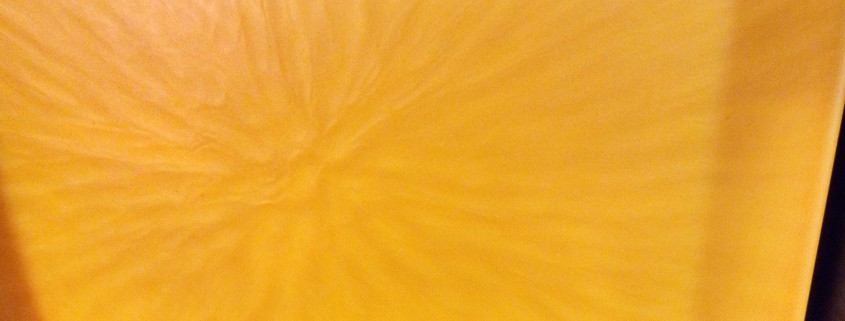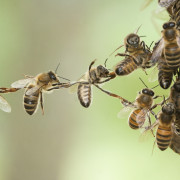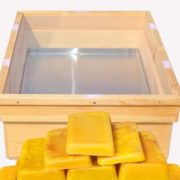Beeswax
Pictured above is some genuine Wildflower Meadows’ beeswax that we recently cleaned and filtered.
Bees produce beeswax from several glands in their abdomens, which they use to build their honeycomb. Usually beeswax production is at its highest when honey is flowing in. It takes an extraordinary amount of honey to produce an equivalent amount of beeswax; most estimates are that up to twenty pounds of honey are required to generate a pound of new wax. At times of the year when honey is not flowing strongly, the bees prefer to recycle existing wax, moving it around for comb repairs and other needs, rather than generate new wax.
At Wildflower Meadows, our bees do not produce much surplus beeswax. As a company dedicated to queen rearing, our bees are not necessarily optimized for either honey or beeswax production. Rather, we have many small mating nucs, which are designed to raise queens rather than collect surplus honey. Occasionally, however, especially during strong honey flows, our colonies can get clogged up with beeswax. The bees get so excited about the incoming nectar and honey that they start building wax everywhere! We often have to clear wax out of the area in and around the feeders so that the feeders do not get clogged and unusable for later in the season, when the bees will need to be fed.
If we collect enough beeswax – a little at a time – we sometimes can end up with a tray or two in a season. When the surplus wax is cleaned and filtered, it is a joy to behold. The beeswax is soft and fragrant, naturally golden like the flowers it was sourced from. Beeswax has been used for millennia, primarily for candle making and cosmetics. Most beekeepers will agree: there are few things quite as satisfying as slow-burning, fragrant beeswax candles made from your own beeswax!








